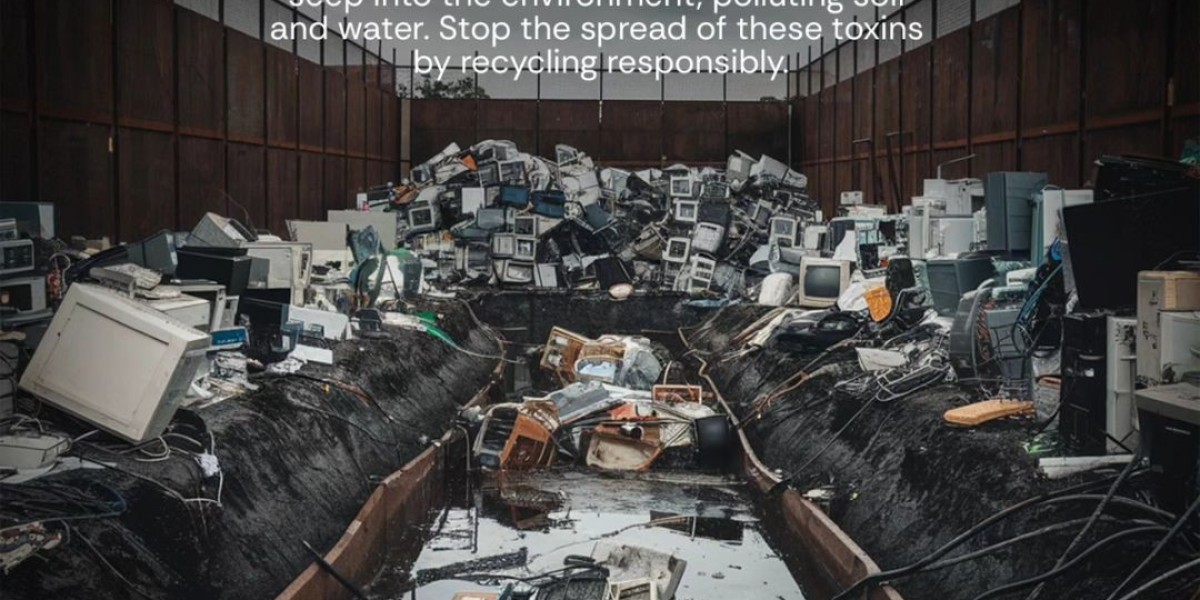As technology rapidly advances, electronic devices quickly become obsolete, leading to a growing accumulation of e-waste. When it comes to disposing of your old electronics, one critical factor is often overlooked: data security. Recycling electronics is crucial for the environment, but ensuring your personal or business data is securely erased before disposal is just as important. In this blog, we’ll explore why safeguarding your data is vital and the steps you can take to protect it before recycling, including how certified waste management services can assist in the process.
1. Why Data Security is Crucial
Many people unknowingly dispose of old electronics without properly deleting sensitive information, opening the door for identity theft and data breaches. Whether it's personal photos, financial details, or confidential business information, every device you recycle may contain valuable data that can be exploited if not handled correctly.
Without proper data protection, anyone who accesses your device can retrieve files, even if they’ve been deleted using standard methods. This is why securely erasing data before recycling electronics is essential to protect your privacy.
2. Steps to Safeguard Data
Before recycling your electronic devices, it’s important to follow several steps to ensure your information is wiped clean. Here’s how you can safeguard your data effectively:
Step 1: Backup Important Files
Before wiping any device, make sure to backup all important files to an external hard drive or cloud storage. This ensures that no valuable data is lost during the wiping process. After backing up, double-check to confirm everything you need is saved securely.
Step 2: Perform a Factory Reset
Factory resetting a device is the first step to erasing data. However, while this method deletes most files, some traces of data might still remain. Therefore, it is crucial to use further methods to ensure complete removal of sensitive information.
Step 3: Use Data Wiping Software
For an added layer of security, you should use specialized data wiping software to fully clean your device. This software overwrites your data multiple times, making it virtually impossible to recover. Many of these tools are available for free or at a low cost, offering peace of mind before handing your electronics over for recycling.
Step 4: Physically Destroy Hard Drives (if necessary)
In some cases, particularly for businesses handling highly sensitive data, physically destroying hard drives is the most secure method. You can either remove the hard drive yourself and smash it with a hammer or seek professional help from certified waste management services to shred the hard drives safely and securely.
3. How Waste Management Services Can Help
Certifiede e-waste company not only ensure that your old electronics are recycled in an eco-friendly manner, but they can also provide secure data destruction services. When using professional waste management services, they often offer guarantees that all data is erased beyond recovery.
For businesses with compliance obligations, certified recyclers can issue data destruction certificates, proving that sensitive information has been securely wiped or destroyed. This ensures complete peace of mind when it comes to data protection.
4. Choosing the Right Waste Management Services for Secure Disposal
When looking for waste management services to recycle your electronics, it’s important to ensure that they offer secure data destruction. Here are a few factors to consider when selecting a reliable provider:
- Data Destruction Certificates: Ensure the recycler provides a certificate that confirms your data has been securely destroyed.
- Compliance with Standards: Look for companies that comply with industry standards, such as R2 (Responsible Recycling) or ISO certifications. These certifications indicate that the company follows best practices in both recycling and data destruction.
- Reputation and Experience: Choose a waste management service that has a solid track record of secure data destruction and environmentally responsible recycling.
5. Conclusion
Safeguarding your data before recycling electronics is essential for both individuals and businesses. By following the steps outlined—backing up files, performing factory resets, using data wiping software, and in some cases, physically destroying hard drives—you can protect your sensitive information. Additionally, using certified waste management services will ensure secure data disposal and responsible recycling, helping you contribute to a safer and greener future.
When disposing of old electronics, remember to prioritize data security as much as environmental responsibility. Trust reliable waste management services like certified e-waste recyclers to handle both effectively.









